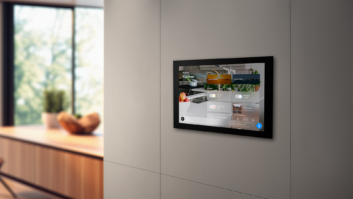Some days I really worry about the future of our industry, especially in the face of the economic challenges that we are all grappling with right now.

Over the years, the industry has grown and evolved almost in spite of itself. Poorly managed integration firms and shortsighted manufacturers have come and gone, sometimes leaving a trail of disarray and distrust. And even from the industry’s survivors, consumers are often left with products and so-called solutions that are more complicated and unreliable than they should be.
Yet, in spite of all of this, a relatively large core group of companies and individuals not only have found a way to survive and succeed for more than 20 years, but they have learned to do so professionally and admirably, earning referrals and good will from some of the most demanding clients in the world. It’s clear that companies that are in business for the right reason and keep their eye on the ball even in the toughest conditions, are truly built to last.
This month, as many of us converge on Atlanta for the 20th CEDIA EXPO, most financial reports indicate that our recession has finally bottomed out, many banks are back on firm footing, and we are even seeing home prices in many cities starting to rebound.
Granted, we still have a long way to go, and the real estate market will surely never return to its bubble-like levels, but the more I think about it, the more confident I am in the assertions of “Back to Business” columnist Richard Millson. On p. 74 of this issue, Millson says that we should expect to see our industry bounce back much more quickly than the rest of the economy, due to our involvement with a wealthy client base and our ability to work with almost any technology that is thrown our way.
agree with Richard’s spot-on observations, especially as they relate to our industry’s adaptability to new technical challenges. Case in point is a company that I had the privilege of visiting last month in Torrance, California.
At Stewart Filmscreen headquarters, I witnessed first hand how an industry manufacturer has prospered for much more than 20 years by seeking out new partnerships, markets, and efficiencies, even as times and technologies have changed around it. In one manufacturer, I saw a metaphor for how our entire industry should be thinking all the time.
Unlike most projection screen manufacturers that began in the education market, making screens for classrooms around the country, Stewart’s early business came via the two industries in its own backyard: Hollywood and aerospace products manufacturing. In fact, Walt Disney, himself, contracted an earlier generation of the Stewart family to help build attractions in his Anaheim theme park, and the manufacturer continues to work with Disney properties today. Stewart also has worked with many command- and-control facilities, learning to adhere to strict military specs and protocols.
The point is that the family-owned Stewart Filmscreen always has been a diversified company that would seek out opportunities when they arose. Even as its focus on Hollywood and the aerospace market broadened over the years to include pro AV and home theater, its emphasis on quality never wavered. Stewart seems to take pride in its ability to manufacture products of enormous scale, while treating each screen as a custom order for a specific client.
I think we can all learn from companies like Stewart Filmscreen, and others, 4 that find a way to cultivate new opportunities, while never forgetting where they started.







